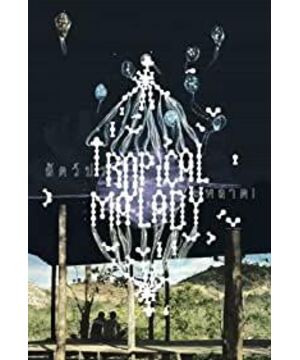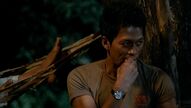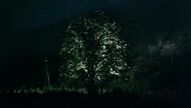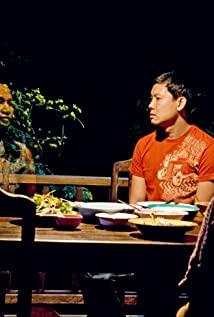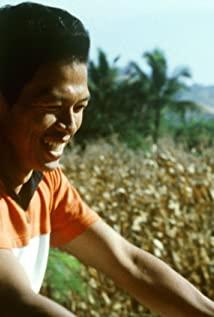Title: Tropical Diseases
Director: Apichatpong Weerasethakul •
Starring: Banlop Lomnoi / Sakda Kaewbuadee
Release: 2004
in service troops Ken, is a hearty healthy young soldiers, has no girlfriend, After getting to know Dong, an equally bright and bright young man in the country, a sweet love rose in my heart. Write a small note to court Dong, Dong's parents and Dong himself have no objection to Ken's confession. The two are like brothers and like shy first lovers, wandering hand in hand in the city and the countryside, except for occasional intimacy without excessive behavior. There are various myths circulating in the Indo-China Peninsula. At the beginning of the film, Tan Nakajima is quoted as saying: "We all have a beastly side. As human beings, our responsibility is to be like a tamer, to tame other animals, Even teach them to do things that are contrary to animal nature." This sentence is like a prophecy.
Dong has had several girlfriends, so he is not sure whether he is gay or not, and when he meets a beautiful girl who throws her eyebrows at him on the bus, his heart will be shaken. He smiled and shoved Ken's exploratory affection in the dark theater, in the quiet rural bamboo house. They wandered in the dim lights at night, drinking cold drinks and eating barbecue together, watching performances, shopping malls, going to temples to pray to gods and asking for fortunes, and riding motorcycles at a gallop, sticking together inseparably. In the upper part of the film, the two protagonists move on the edge of the jungle like happy little beasts. The photography and composition are clean and beautiful, the light source is sufficient and the colors are full and bright.
In the night, under the street lights, Dangdong and Ken were like two tame little beasts, kissing each other's palms in satisfaction and gratification, and then parted happily. The first half of the film ends here, and the second half enters the topic. The story took a sharp turn and took a different tune. People were worried because the beast attacked the village and attacked the livestock, and it was said that the beast could bring disease and misfortune. For the benefit of the villagers, Ken, a soldier, walked into the jungle with a gun. At this point Dong mysteriously disappeared. Lonely Ken was in the vast jungle, chasing the footprints of the monsters, and the monsters seemed to follow him all the time.
Even though it was shot in the jungle, the second half of the film is very particular about composition and lighting, creating an immersive mottle. In a scene at night, in order to capture the fantastic beauty, the director illuminated a verdant, upright and independent tree on the field with transparent lights from the bottom up. Once the breeze blew the tree, he gently swayed his body in the long shot. , Each leaf is transparent like cicada wings, rubbing with a sound and floating like a fairy, as if it is a strange tree from the realm of the gods. Ken's encounter in the jungle is like a legend that doesn't exist, like sleepwalking. There seems to be a new development in the dangerous jungle, and Dong has become a half-human, half-beast monster.
"Tropical Disease" is the best film that has won the highest international reputation on behalf of Thai films so far. It won the Jury Prize at the 57th Cannes Film Festival in 2004, and director Apichatpong Weerasethakul has become a The most masterful potential international director. His films are not simple imitations, nor simple narrative intercession, but full of national speculation, with a maze-like profound beauty. "Tropical Diseases" is a two-part film. The first part is shallow and subtle, and the second part is psychedelic and colorful. It uses the sacred and harmonious "tiger culture" of the Thai people throughout the film. The tropical natural ecology and characters are in the The rich mythological atmosphere is meaningful.
View more about Tropical Malady reviews


